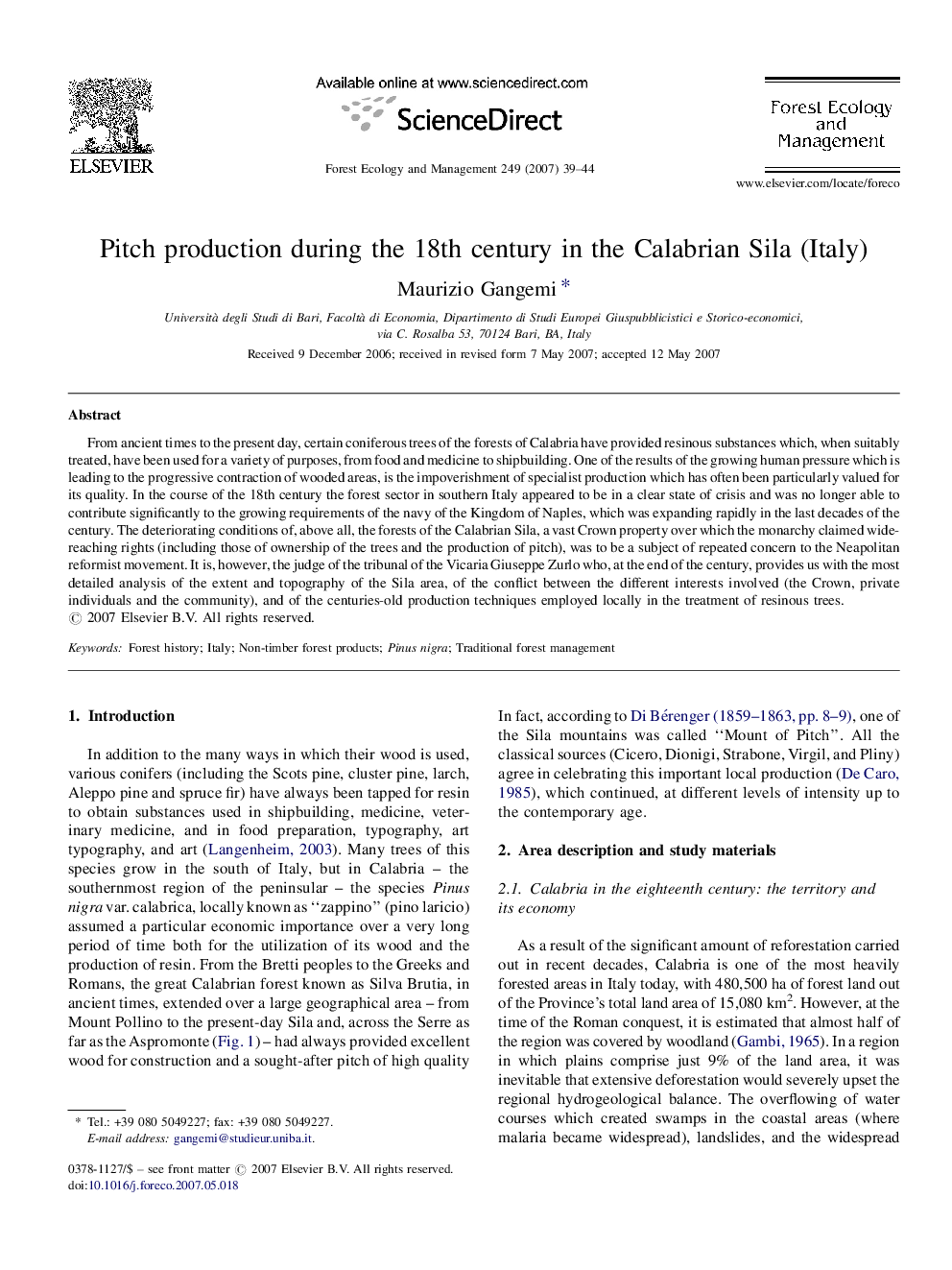| Article ID | Journal | Published Year | Pages | File Type |
|---|---|---|---|---|
| 90163 | Forest Ecology and Management | 2007 | 6 Pages |
From ancient times to the present day, certain coniferous trees of the forests of Calabria have provided resinous substances which, when suitably treated, have been used for a variety of purposes, from food and medicine to shipbuilding. One of the results of the growing human pressure which is leading to the progressive contraction of wooded areas, is the impoverishment of specialist production which has often been particularly valued for its quality. In the course of the 18th century the forest sector in southern Italy appeared to be in a clear state of crisis and was no longer able to contribute significantly to the growing requirements of the navy of the Kingdom of Naples, which was expanding rapidly in the last decades of the century. The deteriorating conditions of, above all, the forests of the Calabrian Sila, a vast Crown property over which the monarchy claimed wide-reaching rights (including those of ownership of the trees and the production of pitch), was to be a subject of repeated concern to the Neapolitan reformist movement. It is, however, the judge of the tribunal of the Vicaria Giuseppe Zurlo who, at the end of the century, provides us with the most detailed analysis of the extent and topography of the Sila area, of the conflict between the different interests involved (the Crown, private individuals and the community), and of the centuries-old production techniques employed locally in the treatment of resinous trees.
